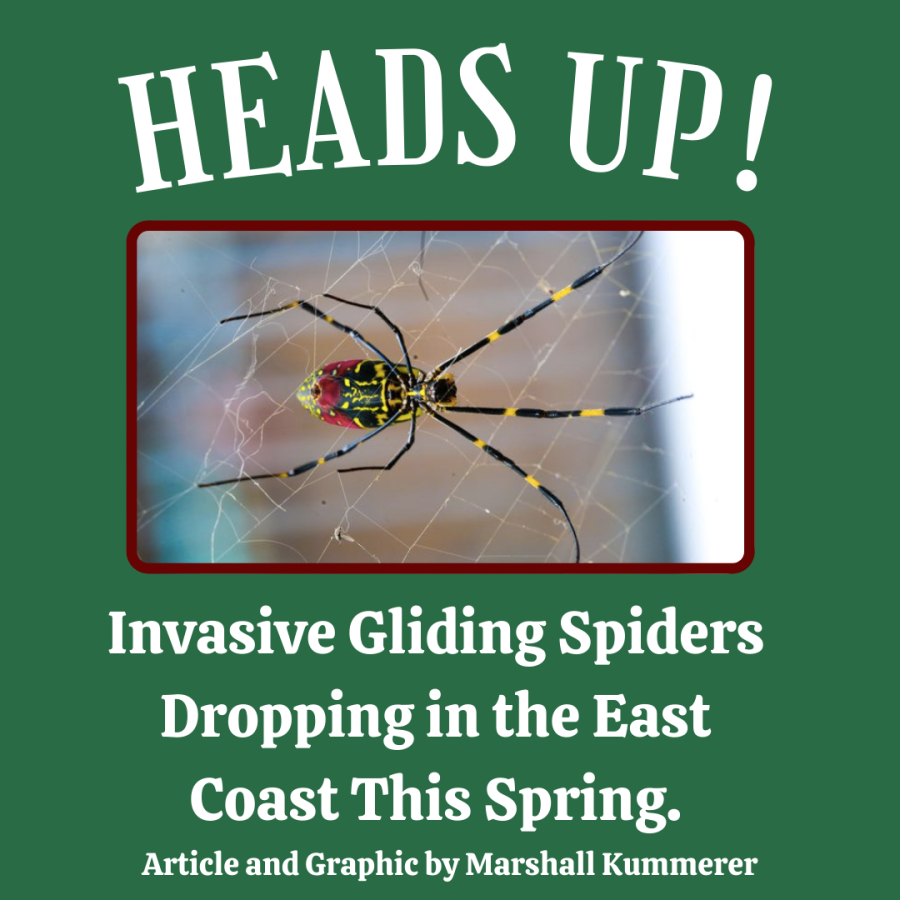Heads up! Invasive Gliding Spiders Drop in the East Coast This Spring.
Ever since its first spotting in 2013, the Asian native Joro spider (Trichonephila clavata) has been spreading rapidly throughout Georgia and other parts of the Southeastern United States and is expected to spread up the East Coast this spring.
These spiders are amazingly well suited for the East Coast and their survival capabilities are unlike most invasive species. They can grow to be 3 to 4 inches long, which is about the size of a human palm and can create amazing webs that can get at least 10 feet wide. Scientists have found that the Joro spider has a 74% survivability rate with beneficial traits, such as high metabolism, high heart rate, and strong resistance to weather changes, unlike their counterpart the golden silk spider, which has been invading the United States since the 1860s. The most interesting (but equally horrifying) part about them is their ability to weave silk gliders and use them to help in a process called ‘ballooning’. Ballooning is a process that these spiders use to be able to be carried by wind via their silk ‘balloons’.
The idea of a giant colorful spider that can also glide making its huge home on your porch is quite terrifying, especially considering North Carolina’s history with life-threatening arachnids such as the black widow. But according to researchers, these bright yellow spiders are nothing to worry about.
According to Andy Davis, a research scientist from Georgia’s Odum School of Ecology, these spiders won’t have much of an effect on the natural ecosystem and says that “People should try to learn to live with them, if they’re literally in your way, I can see taking a web down and moving them to the side, but they’re just going to be back next year.”
Have no fear, arachnophobes! Though their size may frighten people, these spiders are just as reliable and harmless as the ‘friendly neighborhood’ Spiderman. The Joro spiders are venomous, but their fangs aren’t strong enough to pierce human skin and their venom won’t harm humans. They also won’t bite unless provoked; just as many say, they’re more afraid of you than you are of them.
These helpful arachnids eat harmful invasive species, such as the brown marmorated stink bugs, which have been terrorizing farmers for years as they completely wipe out corn, pepper, tomato, apple, and peach crops. The spider’s meal of choice is mosquitos, a common insect during the typical North Carolinian summer and the prime spreader of malaria. Not only that, but they also eat other pesky insects such as the yellow jacket, biting flies, and more.
Despite how scary these spiders may sound, these arachnids will do more help than harm and will have positive effects once they get here. So when the time comes that you see this new neighbor, put your brooms, saltwater guns, shoes, or other spider-killing tools and save them for the black widows and brown recluses and embrace your new 8-legged best friend — these spiders are here to stay.

(They/them)
Marshall's just a silly little guy with a passion for voicing their unnecessary opinion! When they aren't writing about their original characters...












